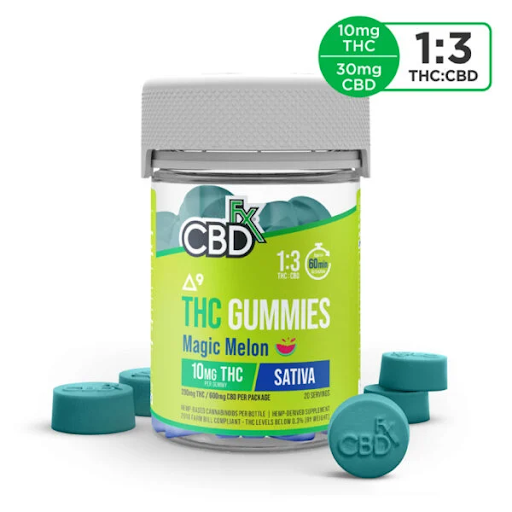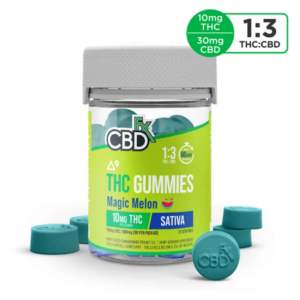HEALTH
How Medical Algorithms Are Shaping the Future of Patient Care

As we embark on an age where technology becomes a cornerstone in delivering healthcare services, the significance of medical algorithms comes to the forefront. These complex computational tools wield the power to transform massive datasets into actionable insights, streamlining patient care and opening doors to innovative treatment plans. In this exploration, we’ll delve into how these algorithms affect change, enhance predictive healthcare analytics, and augment the systemic management of health services.
Table of Contents
- Key Takeaways
- Understanding Medical Algorithms and Their Role in Healthcare
- The Impact of Algorithms on Diagnosis and Treatment Planning
- Enhancing Patient Care Through Predictive Analytics
- Improving Access to Care with Telemedicine and Remote Monitoring
- Data-Driven Decisions: Algorithms in Healthcare Management
- The Intersection of AI and Human Expertise in Clinical Environments
- Addressing the Challenges: Privacy, Security, and Algorithm Biases
Key Takeaways:
- Medical algorithms are revolutionizing healthcare through precise diagnostics and personalized treatment plans.
- Predictive analytics and telemedicine are prominent applications of algorithms that improve patient outcomes.
- While medical algorithms offer immense benefits, addressing privacy, security, and biases remain critical challenges.
Understanding Medical Algorithms and Their Role in Healthcare
The burgeoning field of healthcare technology has heralded a new era defined by efficiency and precision, where medical algorithms have taken center stage. These data-driven tools encompass various forms of artificial intelligence, including machine learning and decision support systems that assist clinicians in diagnosing conditions, formulating treatment plans, and predicting patient outcomes. Embedded within the digital fabric of healthcare, these algorithms process health data at an unprecedented scale, providing a wealth of knowledge that can lead to better informed and timely medical decisions.
As the cornerstone of modern healthcare technologies, medical algorithms can analyze complex health records and numerous variables that human practitioners might overlook. In this way, they significantly contribute to precision medicine, which considers individual differences in patients’ genes, environments, and lifestyles in managing health and treating diseases. Thus, they serve as invaluable adjuncts to physicians, customizing care to each patient’s specific needs.
The Impact of Algorithms on Diagnosis and Treatment Planning
Medical algorithms have made a measurable impact on diagnostics and treatment planning. They provide healthcare professionals with powerful tools to diagnose more quickly and accurately. For instance, radiology has witnessed a revolution with algorithms that detect subtleties in imaging that may indicate disease, thereby facilitating early intervention. Regarding treatment planning, these algorithms can simulate various scenarios and recommend approaches based on the highest probability of success by considering many factors from a patient’s health records.
These algorithm-powered tools have proven effective in managing complex diseases, offering a multifaceted view of the patient’s condition and potential therapies. By leveraging vast datasets and learning from new information, these systems can continuously improve their diagnostic accuracy and treatment effectiveness, often surpassing traditional methods.
Enhancing Patient Care Through Predictive Analytics
Predictive analytics in healthcare is where algorithms shine brightest. They analyze historical and current data to anticipate future health events, enabling healthcare systems to implement preventative strategies rather than reacting to issues as they occur. This proactive approach is revolutionizing patient care by identifying risk factors early on and suggesting interventions to prevent the onset or progression of diseases. These complex algorithms can predict everything from potential hospital readmissions to outbreaks of infectious diseases, areas of critical importance to public health and individual patient care.
While the potential of predictive healthcare is vast, the incorporation of such models does pave the way to questions about the ethical use of personal data, the robustness of predictions across diverse populations, and how to ensure these systems are used in a way that augments rather than replaces the clinician’s expertise.
Improving Access to Care with Telemedicine and Remote Monitoring
The realm of telemedicine has benefitted immensely from the application of medical algorithms. These technologies have enabled healthcare services with impressive reach and efficiency, especially critical in delivering care to remote and underserved populations. Through medical algorithms, telehealth platforms can analyze patient symptoms, prioritize care requirements, and direct patients to the most appropriate care setting, whether virtual consultations or in-person treatment.
Furthermore, the rise of remote monitoring devices that track health metrics in real-time has been critical in managing chronic conditions outside of the traditional healthcare environment. When coupled with sophisticated algorithms, these devices provide a continuous stream of data that can be analyzed for trends that notify healthcare providers of the need for intervention, potentially avoiding hospital admissions.
The rapid expansion of telehealth services, underscored by the challenges presented by the COVID-19 pandemic, is a clear testament to the potential of these technologies. Their continued evolution includes medical algorithms that offer the promise of an integrated healthcare system that is adept at efficiency and responsiveness.
Data-Driven Decisions: Algorithms in Healthcare Management
Within the administrative wings of healthcare institutions, medical algorithms efficiently manage operational decisions—these range from triaging patients to scheduling staff and managing supply chains. Particularly in hospital settings, where efficient allocation of resources can be life-saving, algorithms understand patterns in patient flow and admission rates and subsequently optimize resource deployment and manage hospital capacities.
The benefits of such algorithmic systems also stretch into economic aspects by reducing overhead costs, improving patient outcomes, and ultimately leading to more affordable healthcare. This optimization translates into improved patient care as resources can be directed to where they’re most needed, enhancing the overall quality of service.
The Intersection of AI and Human Expertise in Clinical Environments
The marriage of AI and human expertise in clinical environments is proving to be a synergistic one. Medical algorithms, fueled by AI, work in tandem with the wisdom and experience of healthcare professionals. The human-AI collaborative model improves patient outcomes through increased efficiency in diagnosis and treatment, yielding a more person-centric approach to healthcare. Medical staff are free to focus on the human elements of care, such as developing relationships with patients and understanding their unique personal and emotional needs, while the AI handles data-heavy tasks.
Addressing the Challenges: Privacy, Security, and Algorithm Biases
Yet, the integration of medical algorithms has its challenges. Privacy and data security are prime concerns, as the collection and analysis of health data must be handled with the utmost care to protect sensitive patient information. Additionally, there’s a potential for inherent biases within algorithms, which can lead to unequal treatment outcomes. To combat these issues, the healthcare industry must adopt stringent policies and practices that ensure data is used ethically, transparently, and securely, maintaining patient trust and the integrity of healthcare systems.
HEALTH
Finding the Best Primary Care Physician: Tips and Insights

It is more important than ever to have a reliable primary care physician in the complex healthcare system of today. Approximately 60% of adults in the US suffer from chronic conditions. This blog will help you in selecting the ideal primary care provider for your needs, offering insightful information and helpful suggestions along the way.
Understanding Your Needs and Preferences
Assessing Personal Health Requirements
Before you begin your search for the perfect primary care physician, it’s essential to take stock of your health needs. Start by pinpointing any particular health issues or chronic conditions you are currently dealing with.
Additionally, take into account your family’s medical history, noting any hereditary conditions that could impact your health risks. These steps will help you prioritize what you need from a healthcare provider and ensure you find someone equipped to meet your specific needs effectively.
Determining Personal Preferences
The satisfaction and ease you experience with your physician significantly influence the quality of your medical care. Consider several key factors:
Firstly, location and accessibility are crucial. Studies show that patients are more likely to maintain regular visits if their primary care physician is within a five-mile radius of their home or workplace.
Secondly, evaluate the features of the physician. Reflect on your preferences regarding their age, gender, and communication style. Feeling comfortable and understood by your doctor can enhance your overall healthcare experience and improve the effectiveness of your treatment. These considerations play a vital role in finding a healthcare provider who meets your needs and fosters a positive patient-doctor relationship.
Researching Potential Physicians
Utilizing online resources effectively involves harnessing digital tools and platforms to optimize learning, productivity, and collaboration. It includes accessing credible information through research databases, leveraging online courses for skill development, and using collaborative tools for efficient teamwork.
Effective utilization also entails networking via social media and industry forums, verifying information sources for reliability, and staying updated with digital trends through blogs and podcasts. This approach not only enhances personal and professional growth but also fosters adaptability in navigating the ever-evolving digital landscape.
You have access to a multitude of information in the digital age:
Assessing Physician Qualifications and Experience
Verifying Credentials
Ensure that the physician you’ve chosen maintains strict standards of care:
Check the certification: Board-certified physicians prove their proficiency by completing rigorous exams and training programs.
Examine their connections with medical colleges to get a sense of the level of their training and education.
Check past malpractice claims: Check the websites of the state medical boards to see how there is a record of malpractice cases.
Reviewing Experience and Specializations
When evaluating a physician’s experience and specializations, years of practice play a crucial role in assessing their competency and depth of knowledge, especially in managing complex medical issues.
Physicians with over ten years of experience typically have enhanced skills from extensive clinical exposure and ongoing professional development. Their longevity in the field often translates into a broader understanding of both common and rare conditions, as well as refined diagnostic abilities honed through years of patient care.
Equally significant is the physician’s approach to care, particularly in handling chronic diseases and preventive health measures. Understanding their treatment philosophy and preventive strategies provides insight into their commitment to patient well-being and long-term health outcomes.
Experienced physicians often adopt a holistic approach that integrates evidence-based medicine with personalized patient care, emphasizing proactive health management and patient education.
Patients benefit from seasoned practitioners who can offer nuanced insights, compassionate care, and comprehensive solutions tailored to individual needs, making years of practice and specialized expertise invaluable in addressing complex medical challenges effectively. It’s important to understand the physician’s viewpoint on managing chronic diseases and preventive care.
Evaluating the Practice Environment
Consider factors like wait times, appointment flexibility, and communication styles when assessing a practice. Look for clinics that prioritize patient needs by offering timely appointments and short wait times.
Positive patient experiences are ensured by using efficient communication methods such as direct messaging and patient portals that enhance engagement and care coordination.
Considering Office Policies and Procedures
Your experience getting healthcare can be significantly affected by a medical practice’s everyday operations:
While scheduling an appointment, seek places that offer fewer wait times and flexible scheduling alternatives.
Communication methods know the office’s procedures for dealing with everyday letters and questions that are urgent.
Assessing Technology Integration
Assessing the use of technology in the office of a physician is crucial for efficient healthcare delivery. Seek for electronic health records (EHR) that safely handle patient data. Look for patient portals that make communication and record access simple. Virtual consultations via telemedicine improve accessibility as well as ease by enhancing the standard of patient treatment overall.
To enhance patient care, modern healthcare heavily relies on technology:
Electronic Health Records (EHR): By providing thorough and easily accessible patient data, EHRs raise the standard of care.
Telemedicine options: The use of telemedicine has increased by 154% since the COVID-19 pandemic, giving patients more convenience and access to care.
Meeting the Physician in Person
Among your most crucial initial actions toward building an enduring healthcare relationship is meeting your potential primary care physician in person. Bring relevant medical records to your initial meeting and prepare questions about their approach to patient care.
Keep in mind their professionalism, ability to work with people, and eagerness to respond to your inquiries. Talk about their availability for emergencies and follow-up appointments to make sure they meet your medical needs. You can figure out comfort and compatibility during this meeting, which will guarantee a fruitful and successful healthcare collaboration.
Initial Consultation Preparation
Preparing for an initial consultation involves gathering pertinent information and setting clear objectives. It includes researching the client or subject matter and understanding their background and needs. Additionally, preparing relevant documents, notes, and questions ensures a focused discussion.
Anticipating potential challenges or questions helps in providing informed advice or solutions. Ultimately, effective preparation ensures that the consultation is productive, builds rapport, and sets the stage for a successful outcome or next steps.
Use the very first meeting to its fullest:
Conclusion
In short, choosing a suitable primary care provider requires a meticulous procedure that weighs individual health requirements, preferences, and pragmatic considerations. Individuals can make informed decisions by evaluating what they require in terms of health, using the Internet to conduct research, and verifying the credentials of their doctors.
Ensuring seamless healthcare experiences requires evaluating the practice environment, including office policies and technological integration. In the end, patients can build a trustworthy relationship with their doctor of choice and improve preventative care as well as their overall health by placing a high priority on communication and compatibility.
Frequently Asked Questions (FAQs)
What are the three most important qualities of a physician?
Clinical competence, which ensures an accurate diagnosis and effective treatment; compassion, which nurtures empathy and patient trust; and strong communication skills, which are essential for successfully conveying medical information and involving patients in their healthcare decisions, are the three most important attributes of a physician. All of these features enhance patient care and satisfaction.
What are the 3 A’s of physician success?
The three A’s of physician success are ability, which demonstrates clinical proficiency and expertise in providing high-quality medical care, affability, which sets a positive patient-doctor relationship through empathy and respect, and availability, which ensures accessibility for appointments and emergencies. These qualities support effective healthcare results and satisfaction for patients.
What are the steps to finding a quality doctor?
Seeking recommendations from credible sources, verifying credentials such as board certification and malpractice history, assessing the physician’s approach to patient care and fit with your health goals, scheduling an initial consultation, and evaluating the doctor’s approach to care are the key elements in finding a quality physician.
What is the best type of doctor for primary care?
The type of primary care doctor that best fits your needs may vary. Family physicians are an excellent option for complete care for individuals of all ages, managing an array of health problems and offering preventative medicine. Physicians who specialize in internal medicine treat individuals who have chronic illnesses and complex diseases. Take the choice based on your personal health needs or the needs of your family.
HEALTH
Find Chronic Pain Relief: How Physical Therapy Can Make a Difference

Living with chronic pain can be debilitating, affecting every aspect of your daily life. Whether it’s due to an injury, illness, or an unknown cause, finding effective relief is crucial for maintaining your quality of life. Physical therapy offers a comprehensive approach to managing chronic pain, providing long-term relief strategies that can help you regain control. At Confluent Health, we specialize in personalized physical therapy treatments designed to alleviate chronic pain and improve overall well-being. Here’s how physical therapy can make a difference in managing chronic pain.
Chronic Pain Management Through Physical Therapy
Comprehensive Assessment and Diagnosis
The journey to chronic pain relief begins with a thorough assessment and accurate diagnosis. Physical therapists at Confluent Health conduct comprehensive evaluations to identify the underlying causes of your pain. This includes reviewing your medical history, conducting physical examinations, and assessing your movement patterns. Understanding the root cause of your pain is essential for developing an effective treatment plan. For personalized care, explore physical therapy near me to find a clinic close to you.
Personalized Treatment Plans
Every individual’s experience with chronic pain is unique, requiring a tailored approach to treatment. Physical therapists at Confluent Health create personalized treatment plans that address your specific needs and goals. These plans may include a combination of therapeutic exercises, manual therapy, pain management techniques, and education. By focusing on your unique condition, therapists can help you achieve optimal pain relief and improved function.
Therapeutic Exercises
Therapeutic exercises are a cornerstone of chronic pain management in physical therapy. These exercises are designed to strengthen muscles, improve flexibility, and enhance overall physical function. By engaging in regular exercise, you can reduce pain, increase mobility, and prevent further injury. Physical therapists guide you through specific exercises tailored to your condition, ensuring they are performed correctly and effectively.
Manual Therapy Techniques
Manual therapy involves hands-on techniques used by physical therapists to manipulate and mobilize soft tissues and joints. Techniques such as massage, myofascial release, and joint mobilization can help reduce pain, improve circulation, and enhance range of motion. Manual therapy is particularly effective for conditions like arthritis, fibromyalgia, and musculoskeletal disorders, providing immediate and long-lasting relief.
Pain Management Strategies
In addition to therapeutic exercises and manual therapy, physical therapists at Confluent Health physical therapy use various pain management strategies to alleviate chronic pain. This may include modalities such as ultrasound, electrical stimulation, heat and cold therapy, and acupuncture. These techniques help reduce inflammation, promote healing, and provide temporary pain relief, making it easier to participate in daily activities and exercise.
Long-term Relief Strategies for Chronic Pain
Education and Self-Management
Education is a vital component of physical therapy for chronic pain management. Physical therapists educate patients about their condition, pain triggers, and self-management techniques. Understanding how to manage pain through lifestyle changes, ergonomic adjustments, and home exercises empowers patients to take an active role in their recovery and maintain long-term relief.
Mind-Body Techniques
Chronic pain can take a toll on mental health, leading to anxiety, depression, and stress. Physical therapy incorporates mind-body techniques such as relaxation exercises, deep breathing, and mindfulness to help manage the psychological aspects of chronic pain. These techniques promote overall well-being and enhance the effectiveness of physical therapy.
Long-term Maintenance Programs
Physical therapy doesn’t end when your sessions are over. Long-term maintenance programs ensure that you continue to manage your pain effectively and prevent recurrence. Physical therapists provide ongoing support and adjustments to your treatment plan as needed, helping you stay on track and achieve sustained relief.
Holistic Approach to Wellness
Physical therapy at Confluent Health takes a holistic approach to wellness, addressing not only the physical aspects of chronic pain but also the emotional and psychological factors. This comprehensive approach ensures that all aspects of your health are considered, promoting overall well-being and a better quality of life.
In conclusion, physical therapy offers a multifaceted approach to managing chronic pain, providing personalized care and long-term relief strategies. At Confluent Health, we are dedicated to helping you achieve optimal pain relief and improved function through expert physical therapy. Whether you’re searching for physical therapy or need to find a physical therapy near me, our team is here to support your journey to better health. Contact us today to learn more about our services and start your path to chronic pain relief.
HEALTH
How Can Organic CBD Gummies Enhance Your Lifestyle?

The buzz around CBD products is hard to miss, especially with more and more people turning to it to support their wellness. If you’re among those curious to delve into this exciting world, organic CBD gummies from https://cbdfx.com/collections/cbd-gummies/ may be the perfect starting point for you. Imagine enjoying something incredibly delicious while potentially experiencing benefits such as feeling more relaxed or relieving mild discomfort. Enjoy the goodness of organic CBD gummies as a delightful and easy addition to your daily regimen. With choices like vegan and gluten-free options, these gummies cater to a broad range of preferences, making them accessible to nearly everyone. Ready to try these little candies and see what all the fuss is about? Explore high-quality organic CBD gummies online for more information.

Understanding CBD And Organic CBD Gummies
In recent years, CBD has captured widespread attention thanks to its promising health benefits. Many people are exploring its potential positive impact on wellbeing and overall health. It’s a non-psychoactive compound derived from the cannabis plant. Organic CBD gummies could be a convenient and tasty option if you’re looking for a way to incorporate it into your daily routine. Crafted from organic hemp, these gummies ensure a pesticide and chemical-free experience, promoting a healthier choice for your wellbeing. Plus, they offer a natural and pure CBD source that could provide wellness benefits.
Here are the following ways how organic CBD gummies can enhance your lifestyle:
Promotes relaxation and calmness
Organic CBD gummies have become famous for those seeking relaxation and calmness. The natural, plant-based ingredients found in these gummies can have a soothing effect on the mind and body. Unlike traditional candies, these gummies are infused with it, a compound found in cannabis known for its potential therapeutic benefits. By consuming organic CBD gummies, individuals can experience a sense of calm and relaxation without the psychoactive effects associated with THC. Whether you need to unwind after a long day or reduce stress and anxiety, organic CBD gummies can be a delicious way to promote calmness.

Helps with focus and productivity
When it comes to daily productivity, there are a lot of different methods people try to increase their focus and get more done in less time. One increasingly popular option is organic CBD gummies. These edible treats are made with all-natural ingredients and CBD extracted from hemp plants and offer a range of potential benefits. Some users report that they help them stay more focused throughout the day, allowing them to tackle tasks more precisely and efficiently. Others say they help ease their anxiety or create a sense of calm, which can be especially helpful for those with high-stress jobs or busy lifestyles. Organic CBD gummies may be worth considering if you’re looking for a natural way to boost your productivity and stay sharp throughout the day.
Natural approach to wellness
If you are looking for a natural and holistic approach to wellness, consider incorporating organic CBD gummies into your wellness routine. The use of organic hemp in these gummies provides a plant-based source without the need for any artificial ingredients or unnecessary preservatives. By choosing organic CBD gummies, you can be sure you are consuming a high-quality product that aligns with your natural and holistic lifestyle. So add these organic gummies to your wellness routine and see how they can help contribute to potential health and well-being.
Convenient and tasty
There is something undeniably irresistible about a tasty and convenient treat. And when it comes to organic CBD gummies, these qualities are desirable and dependable. These gummies offer a flavorful and discreet way to enjoy CBD’s potential benefits, making them an excellent addition to any lifestyle routine. Unlike other methods of consuming CBD, such as oils or capsules, it offer a fun and effortless experience that can be enjoyed anytime, anywhere. With various flavors, taking care of yourself has never tasted so good.
Portable and easy to use
Finding a solution to unwind after a long day has never been more crucial. That’s why portable and easy-to-use CBD gummies have become increasingly popular. With the added benefit of being organic, they’re a natural way to ease tension and help you relax. These gummies are perfect for those on the go, with their discreet packaging allowing for use anywhere at any time. Whether you’re dealing with daily stressors or needing a moment of peace, these portable and organic gummies are the perfect solution to add to your daily routine.

Conclusion
As we wrap up this discussion on organic CBD gummies, it’s essential to remember that it’s not a miracle cure. While many users have reported numerous positive benefits, it’s crucial to approach CBD as an addition to an already healthy lifestyle. You can’t simply consume CBD gummies and expect it to solve all your problems. It’s essential to exercise regularly, eat a well-balanced diet, and manage your stress levels to achieve optimum health. It’s always a good idea to consult a healthcare professional before incorporating a new supplement into your routine. Embrace a comprehensive approach to well-being as the cornerstone of attaining a healthier and more balanced lifestyle.
Author’s Bio
Evelyn Harper is an experienced wellness writer specializing in CBD and holistic health. With over five years in the industry, Penny provides honest and engaging reviews to help readers make informed health decisions. Passionate about natural remedies, she enjoys exploring wellness trends and trying new and best CBD products.

 Cartoon5 months ago
Cartoon5 months agoUnlocking the Potential of Nekopoi.care: A Comprehensive Guide

 Game4 months ago
Game4 months agoExploring Aopickleballthietke.com: Your Ultimate Pickleball Destination

 BUSINESS4 months ago
BUSINESS4 months agoWhat Companies Are In The Consumer Services Field

 HEALTH5 months ago
HEALTH5 months agoUnveiling the Mystery of Pikruos: A Comprehensive Guide

 HOME IMPROVEMENT5 months ago
HOME IMPROVEMENT5 months agoExploring the Events of 2023-1954: A Look Back in Time

 TECHNOLOGY4 months ago
TECHNOLOGY4 months agoUnderstanding Coomersu

 FASHION4 months ago
FASHION4 months ago5 Reasons Why Every Woman Needs a Long Sleeve Dress in Her Closet

 ENTERTAINMENT5 months ago
ENTERTAINMENT5 months agoThe Epic Return: Revenge of the Iron-Blooded Sword Hound
















